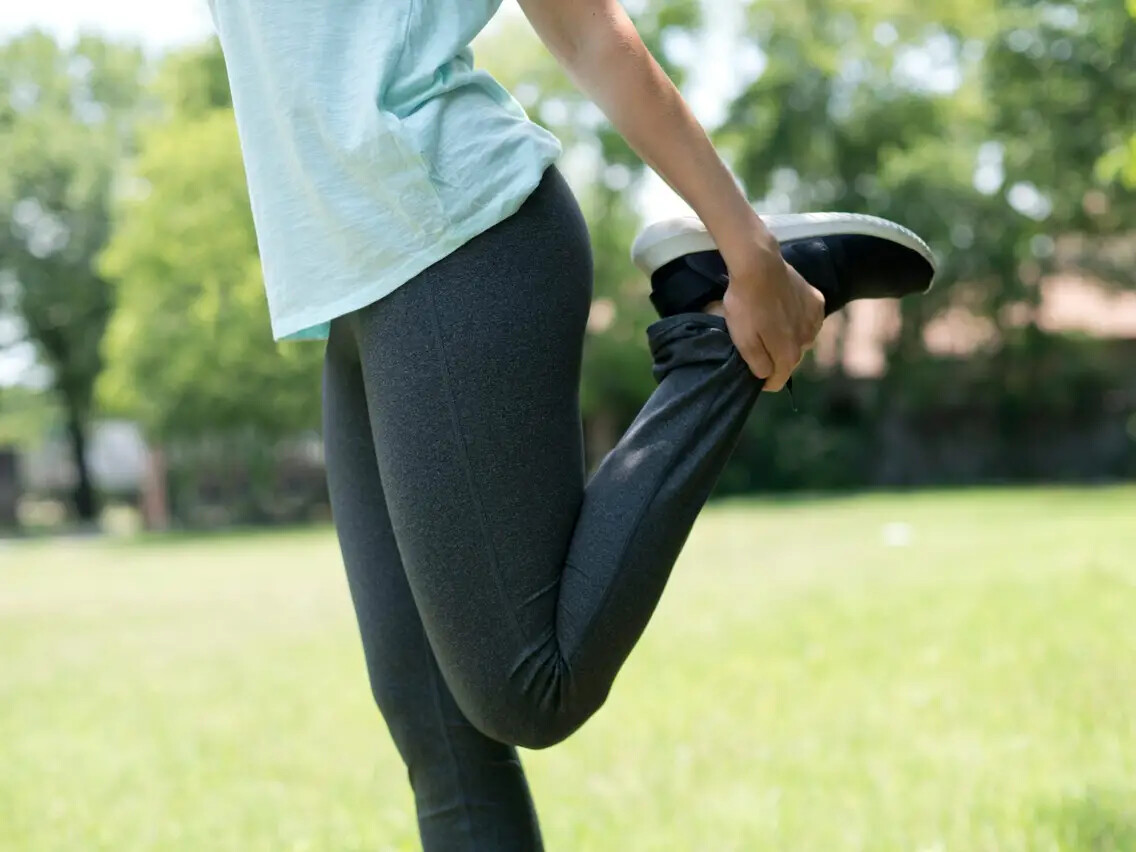Running News Daily
Running News Daily is edited by Bob Anderson. Send your news items to bob@mybestruns.com Advertising opportunities available. Train the Kenyan Way at KATA Kenya and Portugal owned and operated by Bob Anderson. Be sure to catch our movie A Long Run the movie KATA Running Camps and KATA Potato Farms - 31 now open in Kenya! https://kata.ke/
Index to Daily Posts · Sign Up For Updates · Run The World Feed
Knee stretches for runners and the most simple ways to prevent knee pain from running
With plenty of apps to help you keep the pace, running’s convenience and natural form makes it an easy sport to pick up. But forgetting to stretch can turn this exercise into an inconvenient experience. Studies estimateTrusted Source that up to 70 percent of runners injure themselves from overuse each year. Of those injuries, 50 percent happen at the knee.
One common condition is known as patellofemoral pain syndrome (PFPS), or runner’s knee. The name is a broad term used to describe pain in the front of your knee joint. It can be caused by injury to the tendons, fat pad, and cartilage on the underside of the knee cap. Runner’s knee isn’t the only injury that occurs at the knee from running.

Research suggests that these injuries may be due to weak hip-stabilizing muscles which can place increased force below the knee. Timing can also increase your risk for knee injuries.
Stretching away from runner’s knee

To avoid being sidelined by knee pain, Deborah Lynn Irmas, a personal trainer based in Santa Monica, California, advises to warm up with a light jog before running. This helps your body ease into training.
Bring the same discipline from your workouts to your running routine. Stretch before and after you begin. Many health professionals recommend stretching to reduce the risk of injury.
Quads
The quadriceps are the muscles at the front of your thighs. Loosen your quads by:
While standing, hold on to a chair or wall.
Grab your ankle and pull it up behind you to your backside. Keep your knee pointing downward; don’t pull it to the side.
Hold the stretch for 15 to 30 seconds.
Repeat three times, and then switch to your other leg.
Beginners find it easier to do this quad stretch while lying on the floor.
Lie on the floor on your right side.
Grasp your left ankle, and pull it up to your backside.
Hold for 15 to 30 seconds.
Do this three times before repeating on the other side.
Hamstrings
Your hamstring muscles run down the back of your thigh. Pulled or sore hamstrings are common among runners, but you can sidestep injury with this preventive stretches:
Stand up or lie on your back.
Bend your right leg.
With your hands under your leg just above the knee, pull your left thigh toward you gently.
Hold for 15 to 30 seconds.
Reverse your legs and repeat.
Do each this three times per leg.
As you build strength and flexibility in your quads and hamstrings, you can do this stretch while keeping one leg straight on the floor and bending the other toward you, Irmas adds.
Squats
Squats help strengthen your hip muscles. Weak hip-stabilizing muscles can increase your risk for injuries.
Place your feet shoulder width apart.
Lower yourself by bending your knees to a slightly right angle. Make sure your back is straight and your buttocks are rounded inwards.
Don’t let your knees pass your toes.
Come up slowly and squeeze your buttocks at the end.
Do 3 sets of 10 repetitions.
Knee bends
Knees bends help strengthen the muscle around the knee for support. You can place a ball between your back and the wall for smoother movement.
Stand against wall with your feet about a foot away and your knees hip-width apart. Point your feet outwards.
Slide your back down slowly until your knees are bending slightly.
Focus on tensing your buttocks as you come up.
Perform 3 sets of 10 repetitions.
What else matters when you run?
Training suggestions
Too much running can cause strain to your knees. Even for long-time runners, the risk for injuries can increase when you run over 40 miles per week. Most people benefit from running no more than four or five days per week and resting for one day or doing other activities instead.
If you’re a beginner to running, remember to:
use a combination of running and walking
start with no more than 20 minutes of running per day
gradually increase the time you spend running, no more than 5 mins every 14 days
run every other day
Running downhill increases impact and injury risk.
Shoes and soles
There’s little evidence that shoes reduce your risk for injuries, but this study found that foot strike can increase your risk for repetitive stress injuries. People who frequently run with a rear-foot strike (hitting the ground with the back of their foot first) experienced 2.6 times more mild injuries and 2.4 more moderate injuries.
Be sure to get a shoe that fits properly. The three types of shoes for runners include a neutral foot shape, and low foot arch, or high foot arch.
Regardless of your shoe type, it’s recommended to change your running shoes every 350 to 500 miles.
After your run
After you run, Irmas advises doing three sets each of the quad and hamstring stretches on both legs. Keeping your quads and hamstrings stretched and strong will help your knees. Taking those few extra minutes to stretch while your muscles are still warm helps avoid post-run stiffness and pain in your back, hips, calves, and thighs.
If you already have knee pain, don’t try to run through it. “Knees are tricky,” Irmas says. “Stop everything, ice your knee, and take an anti-inflammatory.”
When the pain is gone, start stretching gently. If your knee continues to give you pangs, stay off it and check in with your doctor. Until the pain disappears, you can switch to an exercise that doesn’t stress your knees.
What should you do if you get injured?
Stop running whenever you feel pain or discomfort. To treat injuries, you can use the “RICE” method. This consists of:
Rest: Let the injury rest by avoiding exercise for at least 48 hours.
Ice: Apply an ice pack to the injured area for 20 minutes, four to eight times per day.
Compression: Use a cast, splint, or wraps to support the injury and reduce swelling.
Elevation: Lift the injury area above heart level to decrease swelling.
Always seek medical help if the pain persists for more than a few days.
by Healthline
Login to leave a comment




